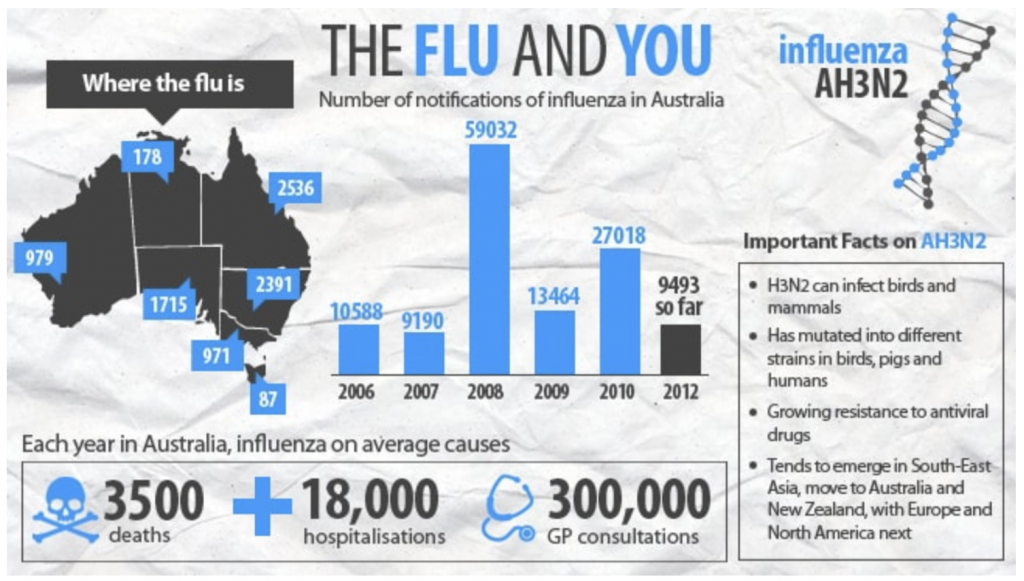“We will continue to be your single source of truth.”
These were the words of NZ Prime Minister Jacinta Ardern last year, and they signify everything that is wrong with the current debate surrounding COVID-19. Rather than having a civil debate about policy, restrictions, and what is best for everyone, governments and social media have taken it upon themselves to censor alternative views which fail to pass their ‘fact checks.’
For this reason, I took it upon myself to call NSW Health and the Australian Government Therapeutic Goods and Drug Administration (TGA) yesterday to ask a few questions about their statistics, sources, and guidelines.
Below are the questions I asked, along with the answers I received:
1. How is the incidence of ‘adverse events following vaccination’ determined?
a. The reporting rate regarding adverse events following vaccination currently stands at 4.1/1000 (0.41%). The TGA doesn’t follow up patients unless they have severe side-effects on the day of vaccination.
2. Are all adverse effects following vaccination (following vaccination) reported?
a. No. The TGA only records information which is reported by the patient (or family member of the patient) who is vaccinated. Therefore, the actual number of those adversely affected is unknown.
3. How is a COVID-19 death determined? (Particularly considering that the risk of death drastically increases amongst the elderly, and those with chronic pre-existing conditions)
a. The cause of death is left up to the discernment of the medical professional present with the deceased.
Let me comment on this for just a moment.
The 2020 United States Centre for Disease Control guidelines instructed medical professionals to report COVID-19 as the cause of death even if there was no diagnosis of the virus.
“In cases where a definite diagnosis of COVID-19 cannot be made, but it is suspected or likely (e.g., the circumstances are compelling within reasonable degree of certainty), it is acceptable to report COVID-19 on a death certificate as ‘probable’ or ‘presumed.’ In these instances, certifiers should use their best clinical judgement in determining if a COVID-19 infection was likely. However, please note that testing for COVID-19 should be conducted whenever possible.
Source: Page 2, Guidance for Certifying Deaths Due to Coronavirus Disease 2019 (US Department of Health and Human Services, CDC)
However, there are several problems with this approach.
- First, if the certifier’s ‘clinical judgment’ led them to believe COVID-19 was the ‘probable’ or ‘presumed’ cause of death, they are definitively recorded as a COVID-death.
- Second, those who died with COVID-19 and severe pre-existing conditions were recorded as COVID-deaths, even if COVID-19 was not the primary cause of death.
- Third, various other illnesses, such as the flu, bear symptoms essentially identical to those of COVID-19. Over the past year, the U.S. has recorded 616,821 COVID-19 deaths and 600 flu deaths.
To put this in comparison, this is over a 99 percent reduction in flu deaths when compared with 2018-2019 flu season. In the Australian context, over 3,500 people die of the common flu each year. Rather than locking the nation down, the Federal Government encourages those who are at risk — the elderly, ATSI people groups, and those with pre-existing medical conditions — to take special precautions.

I am not suggesting for one moment that COVID-19 is identical to the flu, nor that its remedies are the same. Rather, I’m simply highlighting that sensational media reporting of a 90-year-old woman dying with COVID-19 is unjustified when we consider that around 10 people die each day from the flu in an average year without a single news report.
4. Why were the 407 deaths which following vaccinations in Australia heavily scrutinised by the TGA, when compared to the lack of scrutiny of COVID-deaths?
a. The only person who has authority to attribute a death to vaccination is a coroner or medical examiner.
b. There are currently no publicly available statistics concerning the age of the deceased.
5. What sources does the TGA use for its statistics, recommendations, and guidelines?
a. For the statistics concerning vaccine efficacy, the TGA uses the research submitted by the pharmaceutical companies manufacturing the vaccines (i.e., Pfizer and AstraZeneca).
Interestingly, despite being ordered to pay the largest healthcare fraud settlement in history ($2.3 billion USD) back in 2009, Pfizer successfully secured a multi-billion dollar contract with the TGA to distribute its vaccine.
6. Why hasn’t the TGA approved treatments for COVID-19 which have been backed by scientific and medical research (For example, Ivermectin)
a. The TGA has not approved these proposed treatments for COVID-19 because they have not received a formal application and submission by any organisation.
b. Until the TGA receives a formal application, they will not certify these drugs for mainstream use.
7. Are you allowed to see your GP if you have COVID-19?
a. You are prohibited from seeing your GP if you have COVID-19. You are only permitted to have phone consultations with them.
8. What treatments are recommended by the TGA to those who test positive for COVID-19?
a. The TGA does not recommend any treatments other than to call your GP and isolate for 10 days following a positive test, assuming no severe symptoms persist.
9. Is your GP allowed to administer treatments which are not approved by the TGA?
a. GPs are permitted to administer treatments which are approved by the TGA.
b. If a GP administers a treatment which doesn’t have official approval by the TGA, they are at risk of losing their medical license or being sued.
Conclusion
While it is a comforting idea to believe the government is our only source of truth, a superficial dig below the surface reveals this is not the case. Simply put, the methods of data collection used by the TGA, and other international health bodies, inevitably produce a distorted picture of reality.
They are likely to exhibit exaggerated death statistics, under-reporting of vaccine deaths and adverse side effects, and under-reporting of other medical conditions which bear symptoms identical with COVID-19.
In no sense does this seek to undermine the severity of COVID-19, nor is it to question the efficacy of vaccines. Rather, it is simply to put forth the reality that we haven’t been given the whole picture.

























You must be logged in to post a comment.